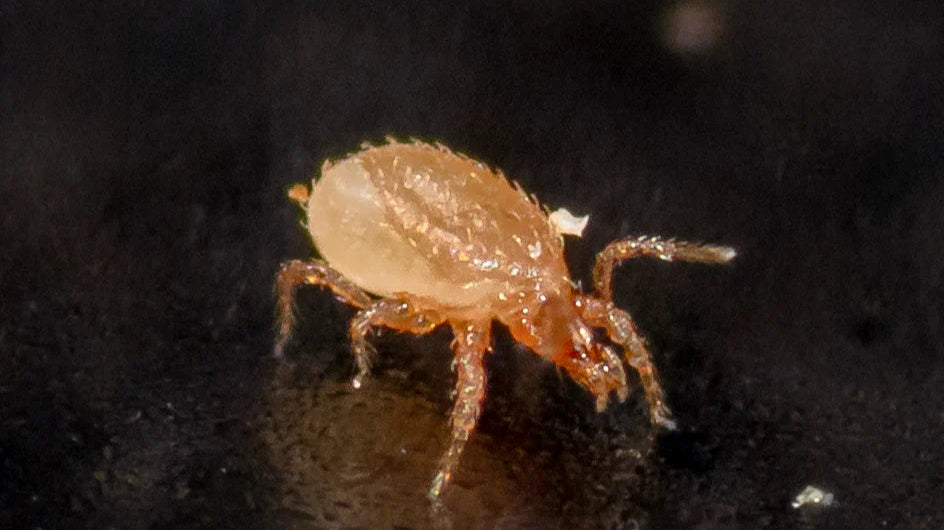Special Blend Predatory Mite Mix Prevention Sachets
Nature’s Four-Part Harmony—Now in Slow-Release Prevention Sachets
Special Blend Predatory Mite Sachets
When pest mites start acting bold, this is the crew you call in.
Our Special Blend sachets combine four powerhouse predators in one slow-release packet:
-
Amblyseius andersoni – cool-tolerant generalist, great for prevention
-
Amblyseius cucumeris – thrips larvae + broad mite control
-
Phytoseiulus persimilis – spider mite specialist
-
Amblyseius swirskii – warm-climate generalist, strong against thrips, broad mites, and whitefly eggs
Each species plays a role—some stalk pest mite eggs, others chase down adults. With overlapping comfort zones and diet preferences, this blend offers broad-spectrum prevention that adapts to your space and your pest pressure.
And yes—they’re real. Barely. These mites are microscopic, so if you can't see them? Don’t worry. Your pests will know they’re there.
When to Use Special Blend vs. Other Sachets
| Sachet Type | Best For | Targets | Environment | Key Strengths |
|---|---|---|---|---|
| Special Blend | Broad-spectrum prevention after an outbreak | Spider mites, broad mites, russet, rust mites | Indoor, GH, covered | Mix of 4 species = wider pest + climate range |
| Swirskii | Thrips, whitefly, and broad mite prevention | Thrips larvae, whitefly eggs, broad mites | Warm, 75–90°F | Strong on thrips in flowering plants |
| Cucumeris | Thrips and broad mite prevention | Thrips larvae, broad mites | Moderate humidity | Cost-effective prevention, slower build-up |
| Andersoni | Spider mite prevention in cooler temps | Spider mites, broad mites, rust mites | 50–85°F, stable RH | Great early-season generalist |
| Persimilis | Strict spider mite prevention | Spider mites only | 68–90°F, high RH | Highly effective, but narrow prey focus |
Use Special Blend when:
-
Your setup has fluctuating temps or mixed pest history
-
You want preventive coverage across multiple mite types
-
You’ve just knocked down a pest surge and want to hold the line
-
You’re not sure which pest mite species you’re fighting—or you’ve got more than one
Are They Safe?
Yes. 100% safe for people, pets, pollinators, and plants.
These mites don’t bite, sting, or bother anyone who isn’t laying pest mite eggs.
How to Use Them
-
Hang or clip sachets near the plant canopy
-
Mites exit slowly over 2–4 weeks through the breathable pouch
-
Avoid misting the sachets directly—overhead watering is fine after 24 hours
-
Replace sachets every 2–4 weeks for best results
How Many Do I Need?
-
1 sachet every 5 sq. ft. for general prevention
-
For higher-risk crops or after a treatment cycle: increase density or pair with a bottle release
Need Immediate Suppression?
Start with a bottle of fast-acting adults to reduce pests right away.
Then deploy sachets to maintain pressure over time.
Shipping & Storage
-
Use immediately for best performance
-
If delayed, store at 42–48°F for up to 48 hours
Too Many Options?
We get it. Try our mite/insect matchmaking quiz and instantly get matched to the solutions you may need.
Mite Matters
Optimizing Pest Management in Cannabis Flowering Using Predatory Mites
How to Treat Snake Mites Naturally with Predatory Mites
The Beginner's Guide to Predatory Mites
Predatory mites are the unsung heroes of plant care, working behind the scenes to protect your plants from destructive pests. Unlike chemical treatments, they offer a natural, self-sustaining solution that requires minimal effort on your part. Whether you’re preventing an infestation or fighting off an active one, these microscopic allies get the job done efficiently and effectively.









